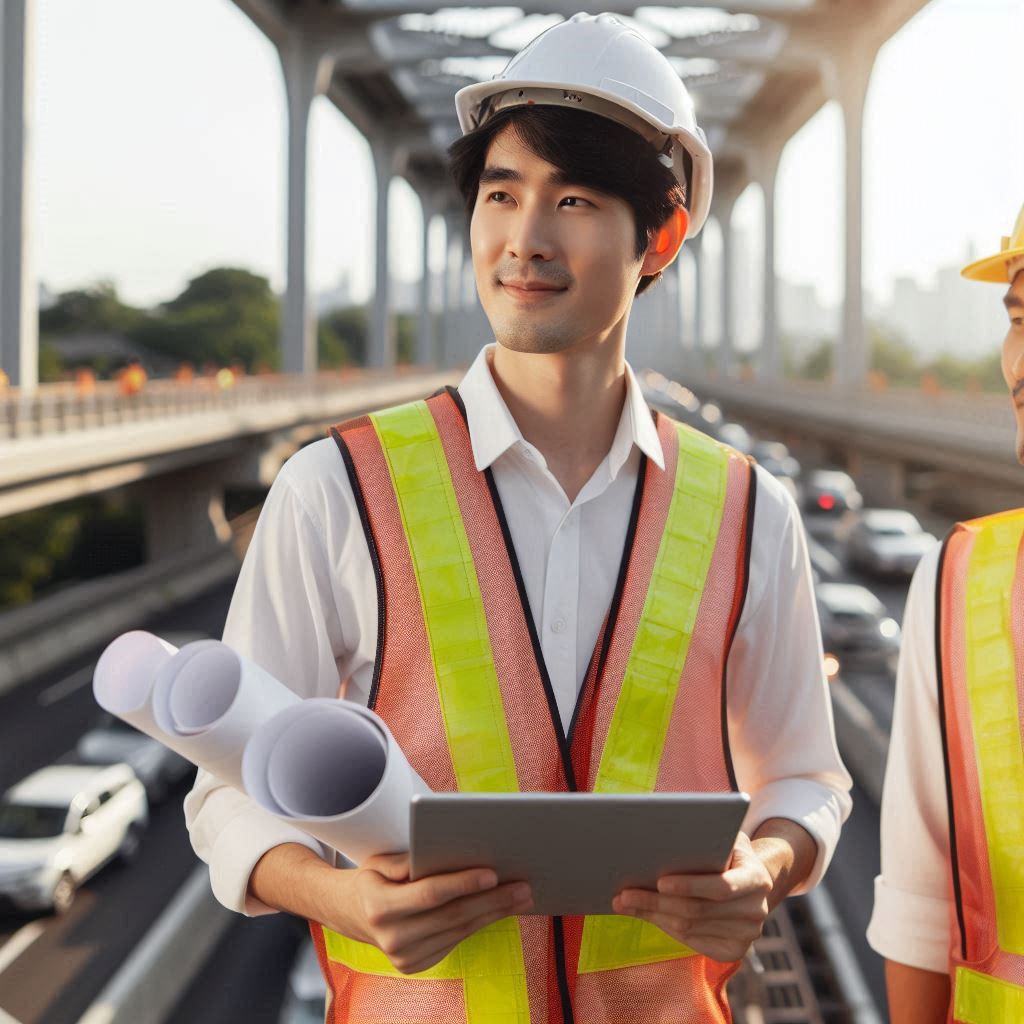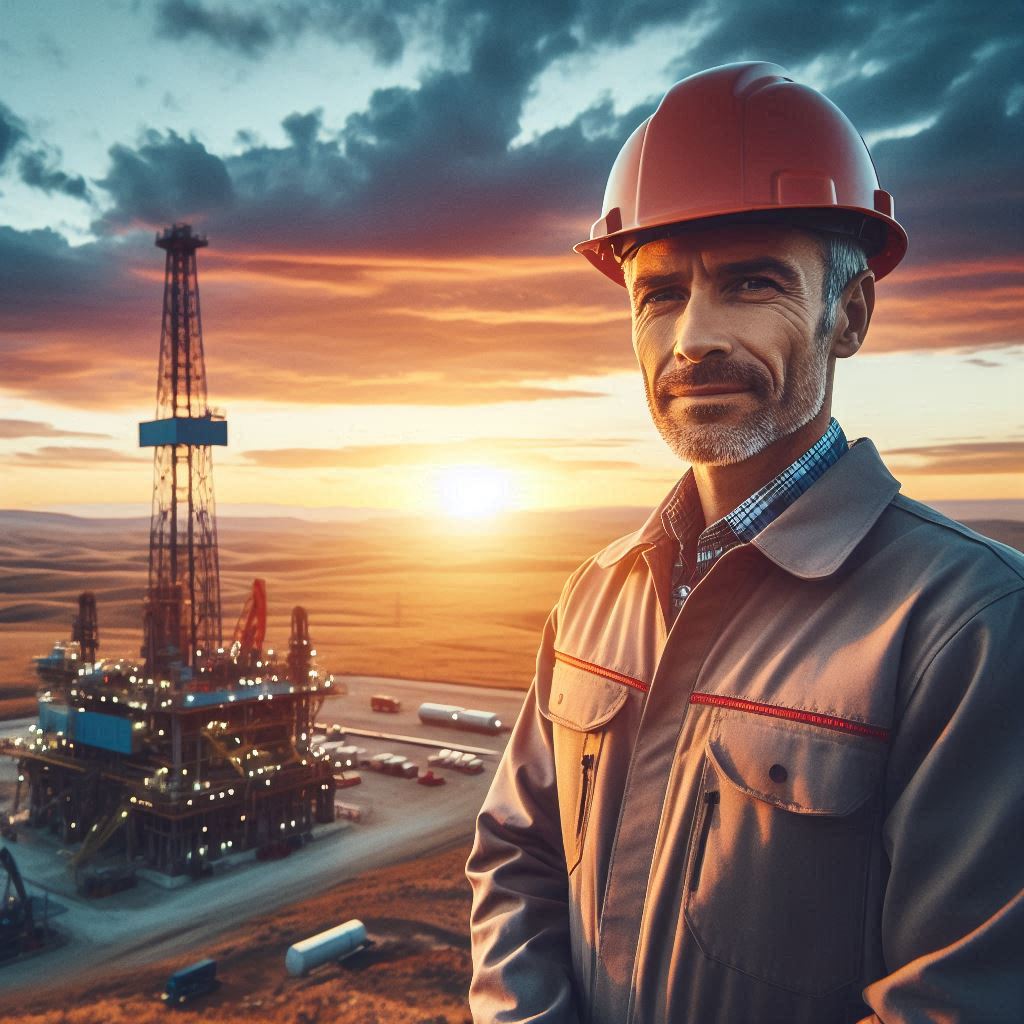Introduction
Transportation engineers play a vital role in our society.
They design and maintain the systems that keep us moving.
Efficient and safe transportation networks are essential for economic growth and public safety.
Transportation engineers ensure that roads, bridges, railways, and airports operate smoothly.
They also work on innovative solutions to reduce traffic congestion and improve travel times.
Their work impacts daily life, commerce, and the environment.
However, transportation engineers face numerous challenges today.
One major issue is aging infrastructure.
Many roads and bridges were built decades ago and now need urgent repairs.
Engineers must find ways to upgrade these structures without causing significant disruptions.
Funding for these projects is often limited, adding another layer of difficulty.
Another challenge is urbanization.
Cities are growing rapidly, leading to increased traffic and pollution.
Engineers must design sustainable transportation systems to handle this growth.
They need to balance the needs of drivers, pedestrians, and cyclists.
Public transportation systems require expansion and modernization to keep up with demand.
Engineers must incorporate new technologies like electric buses and smart traffic management systems.
Climate change also poses a significant challenge.
Engineers must design infrastructure that can withstand extreme weather events.
Floods, hurricanes, and heatwaves can cause severe damage to transportation networks.
Engineers need to develop resilient designs and materials to minimize these impacts.
Additionally, they must work on reducing the carbon footprint of transportation systems.
This includes promoting the use of renewable energy sources and encouraging green transportation options.
Advancements in Technology
How Advancements in Technology Are Constantly Changing the Field of Transportation Engineering
Advancements in technology are transforming transportation engineering at a rapid pace.
Innovations like autonomous vehicles, smart infrastructure, and data analytics are reshaping how we design, build, and manage transportation systems.
Autonomous vehicles promise to enhance safety and efficiency by reducing human error and optimizing traffic flow.
Meanwhile, smart infrastructure, such as intelligent traffic signals and sensor networks, helps in monitoring and managing traffic in real-time, improving overall transportation efficiency.
Data analytics plays a crucial role by enabling engineers to make informed decisions based on traffic patterns, user behavior, and environmental factors.
This leads to better planning and optimization of transportation networks.
Additionally, sustainable technologies, including electric and hybrid vehicles, are advancing efforts to reduce environmental impact and reliance on fossil fuels.
The integration of these technologies not only improves safety and efficiency but also supports the development of more sustainable and resilient transportation systems.
As technology continues to evolve, transportation engineering will likely see further innovations, driving more significant improvements in how we travel and manage our infrastructure.
Challenges in keeping up with new technology and implementing it effectively
However, balancing public input with technical considerations poses significant challenges.
Engineers must integrate community preferences with technical principles and safety standards.
Technical constraints, such as budget limits and environmental regulations, can sometimes conflict with public desires.
Engineers must navigate these complexities carefully to strike a balance.
Community members often prioritize immediate concerns over long-term benefits.
For instance, while residents might resist new roads due to potential noise, engineers focus on alleviating traffic congestion.
Addressing these conflicting views requires effective communication and education about the project‘s broader benefits.
Clear explanations can help align community expectations with technical realities.
Public meetings and consultations can become contentious.
Diverse opinions and strong emotions often arise during these discussions.
Engineers need to manage these interactions skillfully, facilitating productive dialogues and mediating disputes.
This helps ensure that all voices are heard and considered without derailing the project.
Gathering comprehensive public input presents logistical challenges.
Reaching all stakeholders requires using various engagement methods.
Public meetings, online surveys, and social media campaigns need to complement traditional approaches.
Ensuring inclusivity helps guarantee that underrepresented groups have a voice in the decision-making process.
Read: The Role of Aerospace Engineers in Satellite Development
Traffic Congestion
Issue of Increasing Traffic Congestion in Urban Areas
Urban traffic congestion is a growing problem worldwide.
Increased vehicle numbers and inadequate infrastructure contribute to this issue.
Addressing this challenge requires innovative engineering solutions and community cooperation.
Public input can help identify specific congestion points and acceptable solutions.
Engineering Solutions for Managing Traffic Flow and Reducing Congestion
Effective traffic management involves both technological and infrastructural strategies.
Intelligent Transportation Systems (ITS) use real-time data to optimize traffic flow.
Smart traffic signals and adaptive control systems adjust to current traffic conditions.
These technologies reduce wait times and improve overall traffic efficiency.
Building and expanding public transportation networks can also alleviate congestion.
High-capacity transit options, such as subways and bus rapid transit, move more people efficiently.
Encouraging public transport use through incentives and improved services can reduce the number of vehicles on the road.
Moreover, developing pedestrian and cycling infrastructure promotes alternative transport modes.
Safe, accessible pathways encourage walking and cycling, reducing car dependency.
Urban planning that prioritizes mixed-use development can minimize the need for long commutes.
Implementing congestion pricing in urban areas is another effective strategy.
Charging fees for driving in congested zones discourages unnecessary trips.
This approach funds public transportation improvements and reduces traffic volumes during peak hours.
Read: Aerospace Engineering in Commercial Spaceflight
Environmental Concerns
The Growing Emphasis on Sustainability and Environmental Impact in Transportation Projects
Sustainability and environmental impact have become critical considerations in transportation projects.
Communities increasingly demand eco-friendly infrastructure and reduced carbon emissions.
Engineers must respond to these demands with innovative solutions.
Sustainable transportation projects prioritize minimizing environmental harm.
This involves using renewable materials, reducing waste, and protecting natural habitats.
Engineers must balance these goals with technical feasibility and cost-effectiveness.
This balancing act requires continuous learning and adaptation.
Challenges in Designing Eco-Friendly Infrastructure and Reducing Carbon Emissions
Designing eco-friendly infrastructure presents several challenges.
Engineers must find ways to integrate green technologies without compromising functionality.
Renewable energy sources, such as solar panels and wind turbines, can power transportation systems.
However, these technologies must be reliable and efficient under varying conditions.
Reducing carbon emissions is another significant challenge.
Transportation is a major contributor to greenhouse gases.
Engineers must develop cleaner alternatives, such as electric vehicles and public transit systems.
These solutions must be accessible and affordable to encourage widespread adoption.
Balancing these eco-friendly initiatives with community needs adds complexity.
Public support is crucial for the success of sustainable projects.
Engineers must engage with communities to understand their priorities and concerns.
Transparent communication about the benefits and challenges of green infrastructure fosters collaboration and support.
Read: Essential Aerospace Engineering Textbooks

Funding Constraints
The Challenge of Securing Adequate Funding for Transportation Projects
Securing adequate funding for transportation projects is a significant challenge.
Public engagement can identify critical needs, but funding limitations often constrain project scope.
Community expectations can outstrip available resources, leading to difficult prioritization decisions.
Engineers must navigate these financial constraints while delivering effective solutions.
Impact of Limited Budgets on the Quality and Scope of Engineering Work
Limited budgets impact the quality and scope of engineering work.
Budget constraints can force compromises on materials, design, and project scale.
These limitations may affect long-term project sustainability and performance.
Engineers must optimize resource allocation to maintain safety and functionality without exceeding budget limits.
Additionally, project timelines can suffer from extended public consultation periods.
While essential, these processes can delay project progress.
Engineers must balance thorough public engagement with adhering to project deadlines.
Time management becomes a critical skill in such scenarios.
Technical complexity often hinders effective communication with the public.
Engineers must simplify technical jargon and concepts for laypeople.
Clear, concise explanations foster better understanding and more informed public feedback.
Effective communication bridges the gap between technical knowledge and community insight.
Budget constraints further complicate this balance.
Publicly desired features may exceed available funds.
Engineers must prioritize project elements while justifying budget allocations to the public.
Transparent budget discussions help manage community expectations and maintain project support.
Read: Exploring Subfields of Aerospace Engineering
Aging Infrastructure
Problem of Aging Transportation Infrastructure in Many Cities
Aging transportation infrastructure in many cities presents a significant problem.
Decades-old roads, bridges, and transit systems require constant maintenance.
Deterioration can lead to safety hazards, increased congestion, and higher repair costs.
Addressing this issue is critical for sustaining urban mobility and economic vitality.
Infrastructure aging also reduces efficiency and reliability.
Frequent breakdowns and repairs disrupt daily commutes and goods transportation.
This unreliability can deter investment and hinder economic growth.
Therefore, modernizing aging infrastructure is not just a necessity but an opportunity for urban renewal.
Strategies for Renovating and Modernizing Existing Systems While Minimizing Disruption
Renovating and modernizing existing systems require strategic planning to minimize disruption.
One effective strategy is phased construction.
By dividing projects into manageable phases, cities can maintain some functionality while upgrading systems.
This approach helps balance progress with daily needs.
Another strategy is employing advanced technology.
Innovations like prefabrication and modular construction reduce onsite work time.
These methods accelerate project timelines and lessen disruption.
Smart technologies can also enhance infrastructure resilience and efficiency.
Public communication is also crucial in minimizing disruption.
Clear, regular updates keep the community informed about project timelines and expected impacts.
Transparency helps manage expectations and maintains public support throughout the renovation process.
Coordinating with local businesses and residents can also mitigate disruption.
Scheduling work during off-peak hours or providing alternative routes minimizes inconvenience.
Engaging with stakeholders ensures their concerns are addressed, fostering cooperation and support.
Safety Regulations
Examine the Evolving Safety Regulations and Standards in the Transportation Industry
Safety regulations and standards in the transportation industry are constantly evolving.
Engineers must stay abreast of these changes to ensure compliance.
New safety requirements can emerge from technological advancements, accident analyses, or regulatory updates.
Keeping up-to-date with these changes is crucial for designing safe infrastructure.
Challenges in Designing Infrastructure that Meets Safety Requirements Without Sacrificing Efficiency
Designing infrastructure that meets safety requirements without sacrificing efficiency is a complex challenge.
Engineers must balance stringent safety standards with the need for operational efficiency.
Overly cautious designs can lead to inefficiencies, while prioritizing efficiency can sometimes compromise safety.
This delicate balance requires innovative solutions.
Moreover, safety requirements can add significant costs to infrastructure projects.
Engineers must find cost-effective ways to integrate safety features without exceeding budget constraints.
This often involves leveraging new technologies and materials that offer both safety and efficiency benefits.
Finally, engineers must consider the long-term sustainability of their designs.
Infrastructure must remain safe and efficient over its entire lifecycle.
This involves anticipating future needs and potential changes in safety standards.
Sustainable design practices ensure that infrastructure remains relevant and compliant with evolving regulations.
Public Engagement
The Importance of Involving the Community in Transportation Planning and Decision-Making
Involving the community in transportation planning and decision-making is essential.
Community input ensures that projects meet local needs and expectations.
When people feel heard, they support and trust the outcomes.
This involvement can reveal unique insights and local knowledge, often overlooked by engineers.
Engaging the community provides a sense of ownership and responsibility for transportation projects.
When residents participate, they feel more connected to the project’s success.
This engagement can also uncover specific local challenges that technical assessments might miss.
Listening to community members brings a human element to engineering projects, emphasizing real-life impact over mere technical achievements.
Community involvement enhances project transparency and accountability.
When engineers include the public in the planning process, it builds trust and fosters a collaborative atmosphere.
Transparency ensures that the community understands the project’s goals, constraints, and benefits.
This understanding reduces opposition and increases support for the project.
Challenges in Balancing Public Input with Technical Considerations in Engineering Projects
Balancing public input with technical considerations poses significant challenges.
Engineers must integrate community preferences with scientific principles and safety standards.
Technical constraints, such as budget limits and environmental regulations, can conflict with public desires.
Striking this balance requires careful navigation.
Public meetings and consultations can become contentious.
Diverse opinions and strong emotions often surface during these discussions.
Engineers need to facilitate constructive dialogues and mediate disputes.
Skilled facilitation helps ensure that all voices are heard without derailing the project.
Engineers must also manage the expectations of the community, aligning them with technical feasibility and safety standards.
Gathering comprehensive public input presents logistical challenges.
Reaching all stakeholders requires diverse engagement methods.
Public meetings, online surveys, and social media campaigns must complement traditional approaches.
Inclusivity ensures that underrepresented groups have a say in the decision-making process.
Engineers must be proactive in seeking out and considering the voices of marginalized communities.
Translating community feedback into actionable plans is another challenge.
Public suggestions may conflict with each other or with technical requirements.
Engineers must evaluate these inputs critically and transparently.
They must explain why certain suggestions can or cannot be implemented, maintaining trust and transparency.
This step is crucial for managing public expectations and ensuring continued community support.
Explore Further: Ethical Considerations in Computer Engineering
Transform Your Career Today
Unlock a personalized career strategy that drives real results. Get tailored advice and a roadmap designed just for you.
Start NowFuture Trends and Innovations
Explore Upcoming Trends and Innovations in Transportation Engineering
Transportation engineering is on the cusp of significant transformation, driven by emerging technologies and evolving societal needs.
As the field advances, engineers face various challenges in adapting to these changes and designing for a future shaped by innovation.
Challenges in Adapting to New Technologies
Autonomous vehicles (AVs) represent a major leap forward in transportation.
These self-driving cars promise enhanced safety and efficiency.
Yet, engineers face the challenge of integrating AVs into existing infrastructure.
Roadways and traffic signals must be updated to communicate effectively with AVs.
This adaptation requires substantial investment and collaboration between technology developers and infrastructure planners.
Electric vehicles (EVs) are another trend gaining traction.
As the world shifts towards cleaner energy, EVs are becoming more common.
However, this shift necessitates a comprehensive overhaul of charging infrastructure.
Engineers must design widespread, user-friendly charging stations and consider their impact on the power grid.
Balancing these needs with urban space and planning presents a significant challenge.
Smart transportation systems, which use data and connectivity to enhance traffic management, also pose adaptation challenges.
These systems rely on sensors and real-time data to improve safety and efficiency.
Engineers must address issues related to data privacy, system security, and interoperability with existing infrastructure.
Ensuring that these systems are secure and efficient requires innovative approaches and robust solutions.
Gain More Insights: Biomedical Engineering: Role in Clinical Trials
Conclusion
the future of transportation engineering is rapidly evolving with advancements in technology and sustainability.
Autonomous vehicles, electric propulsion, and smart infrastructure are transforming the industry.
These innovations promise to enhance safety, efficiency, and environmental impact.
The importance of adapting to these trends cannot be overstated.
As technology advances, transportation engineers must embrace new methods and tools to stay relevant.
Understanding and implementing cutting-edge solutions will ensure that transportation systems remain efficient and sustainable.
Professionals in transportation engineering should continuously seek knowledge and stay informed about emerging trends.
Attending industry conferences, participating in workshops, and engaging with experts are excellent ways to stay updated.
Embracing innovation and integrating new technologies will be crucial for addressing future challenges in transportation.
By staying proactive and adaptable, engineers can contribute to the development of more efficient, safe, and eco-friendly transportation systems.
This commitment to innovation not only supports career growth but also plays a vital role in shaping a sustainable future for transportation engineering.
The future of transportation engineering holds exciting opportunities.
It is imperative for professionals to remain engaged with the latest advancements and strive to integrate them into their work.
This approach will ensure that the transportation systems of tomorrow meet the evolving needs of society while promoting sustainability and efficiency.




